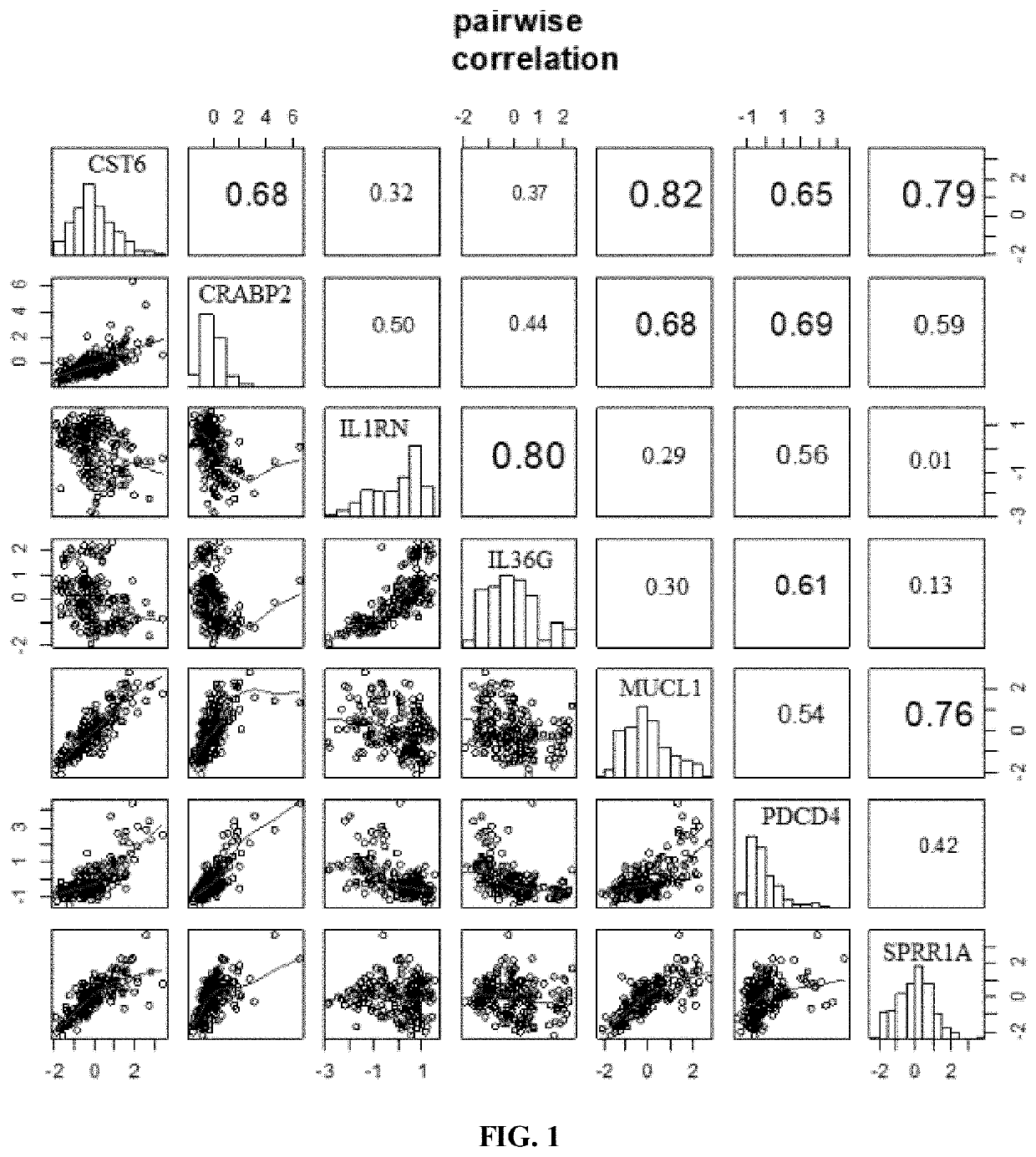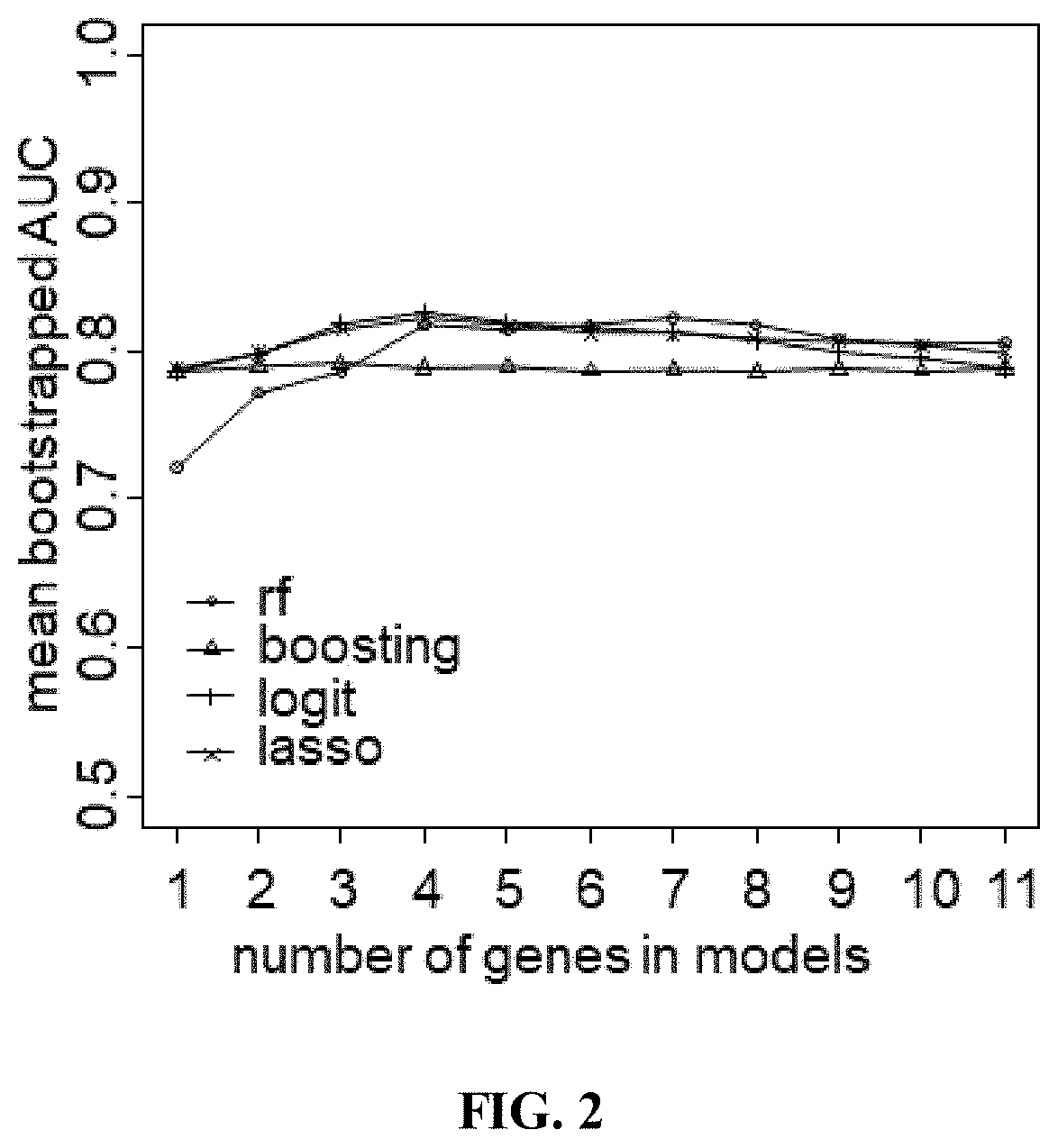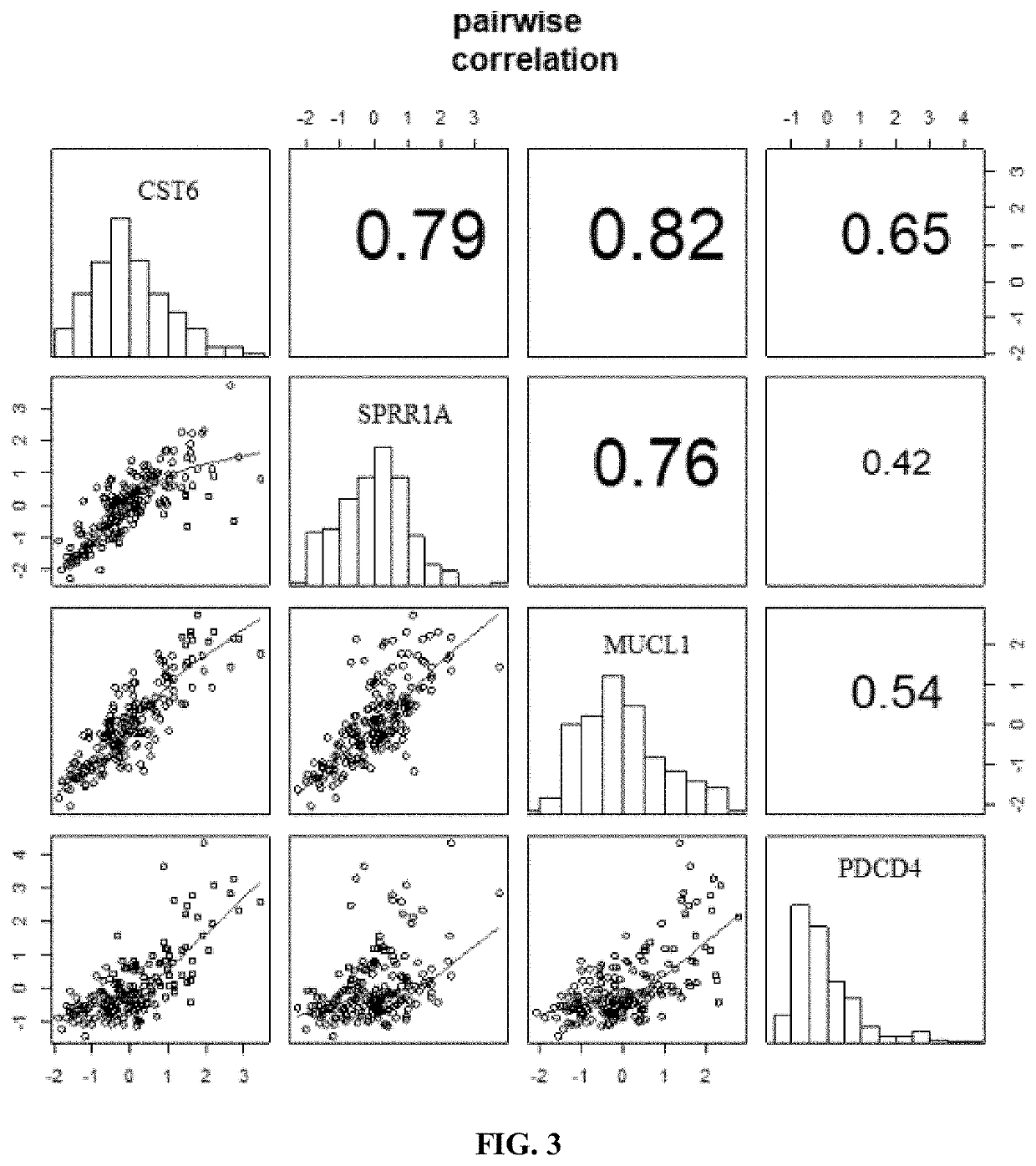Gene classifiers for use in monitoring UV damage
a technology for gene classifiers and uv damage, applied in the field of gene classifiers for monitoring uv damage, can solve problems such as the burden on healthcare workers, and achieve the effects of reducing the burden on healthcare workers, and improving the quality of li
- Summary
- Abstract
- Description
- Claims
- Application Information
AI Technical Summary
Benefits of technology
Problems solved by technology
Method used
Image
Examples
example 1
[0241]This study was to determine changes in skin gene expression following exposure to ultraviolet (UV) B radiation.
[0242]Non-invasive, adhesive biopsies (DermTech) were performed on the right and left post-auricular areas of 24 subjects before and 24-hours following UV-B exposure using the excimer laser dosed at 300 mJ. RNA was isolated from the adhesive biopsies and then underwent reverse transcriptase followed by quantitative polymerase chain reaction protocols to extract DNA. Gene expression was determined 18 genes previously believed to hold a role in skin cancer development.
[0243]Of these 18 genes, 8 showed significantly changed gene expression (p<0.05) related to UV-exposure (based on T-test, comparing gene expression in skin after 24 hour UV exposure to skin before UV exposure from the same site) (see Table 3). These 8 genes include CRAPB2, IL1RN, IL36G, MUCL1, PDCD4, SPRR1A, CST6, and KLK10. One gene, UHRF1, did not demonstrate significant change in gene expression after 2...
example 2
[0251]The ability to detect and treat DNA damage remains a clinical challenge. There are intrinsic mechanisms known to repair DNA damage in bacteria, plants and some animals, but humans seem to have limited options for this process and are thought to rely mainly on nucleotide excision repair (NER) mechanisms. The use of topical DNA repair enzymes, specifically T4 Endonuclease V (T4N5) and Photolyase, may assist in the removal of cyclobutane pyrimidine dimers formed after UV irradiation. Further, these topical DNA repair enzymes may be used in the prevention of actinic keratoses and skin cancers. This study was to determine gene expression changes induced by UVB light and assess the effect of topical DNA repair enzymes in reversing these changes.
[0252]An innovation of non-invasive, adhesive skin biopsies allows for the detection of DNA damage in human skin cells at the molecular level after acute exposure to ultraviolent light. This new technology may also have the ability to monitor...
example 3
[0268]Using data from Example 2, spaghetti plots were generated for ΔCt vs. time point by batch and side (skin area behind right or left ear). Boxplots were generated for ΔΔCt by batch and side. Distribution of change was assessed for 24 hr post-UV versus pre-UV samples.pdf shows the distribution of change. Data was assessed for right and left skin areas separately, and in combination.
[0269]A linear mixed effects (LME) model was used. Because the left and right samples from the same subject are not independent, paired t-test of pre-UV versus post-UV were not used. Also, when averaging the left-side and right-side samples, it is assumed that UV and effects are the same on both left and right sides, and may underestimate the variability in the samples. LME allowed use of both the left and right samples while taking account of any dependence among the samples. A benefit of using LME models is that they can provide more accurate p-values, and may account for sources of variability than ...
PUM
| Property | Measurement | Unit |
|---|---|---|
| Time | aaaaa | aaaaa |
| Time | aaaaa | aaaaa |
| Time | aaaaa | aaaaa |
Abstract
Description
Claims
Application Information
 Login to View More
Login to View More - R&D
- Intellectual Property
- Life Sciences
- Materials
- Tech Scout
- Unparalleled Data Quality
- Higher Quality Content
- 60% Fewer Hallucinations
Browse by: Latest US Patents, China's latest patents, Technical Efficacy Thesaurus, Application Domain, Technology Topic, Popular Technical Reports.
© 2025 PatSnap. All rights reserved.Legal|Privacy policy|Modern Slavery Act Transparency Statement|Sitemap|About US| Contact US: help@patsnap.com



